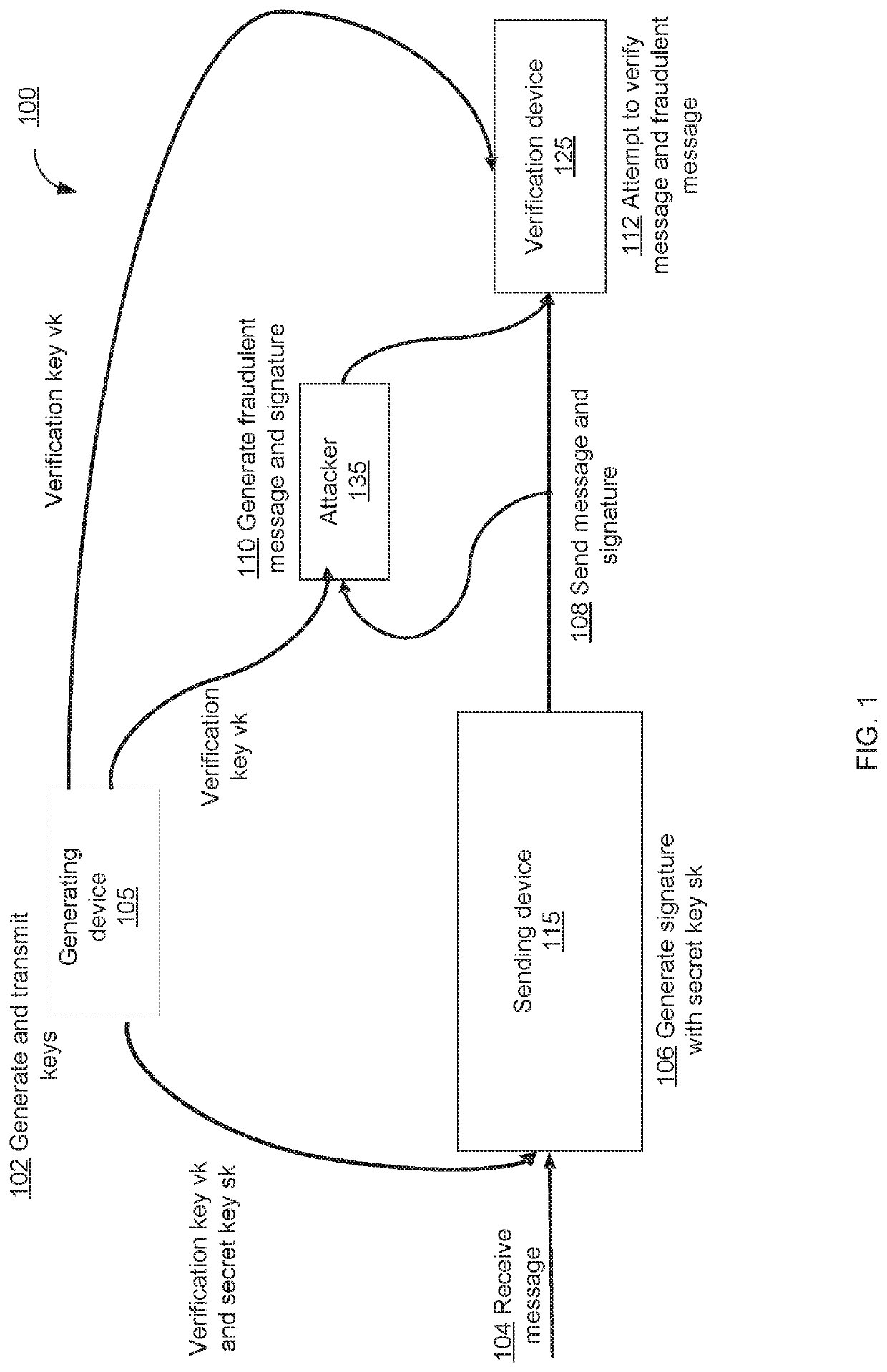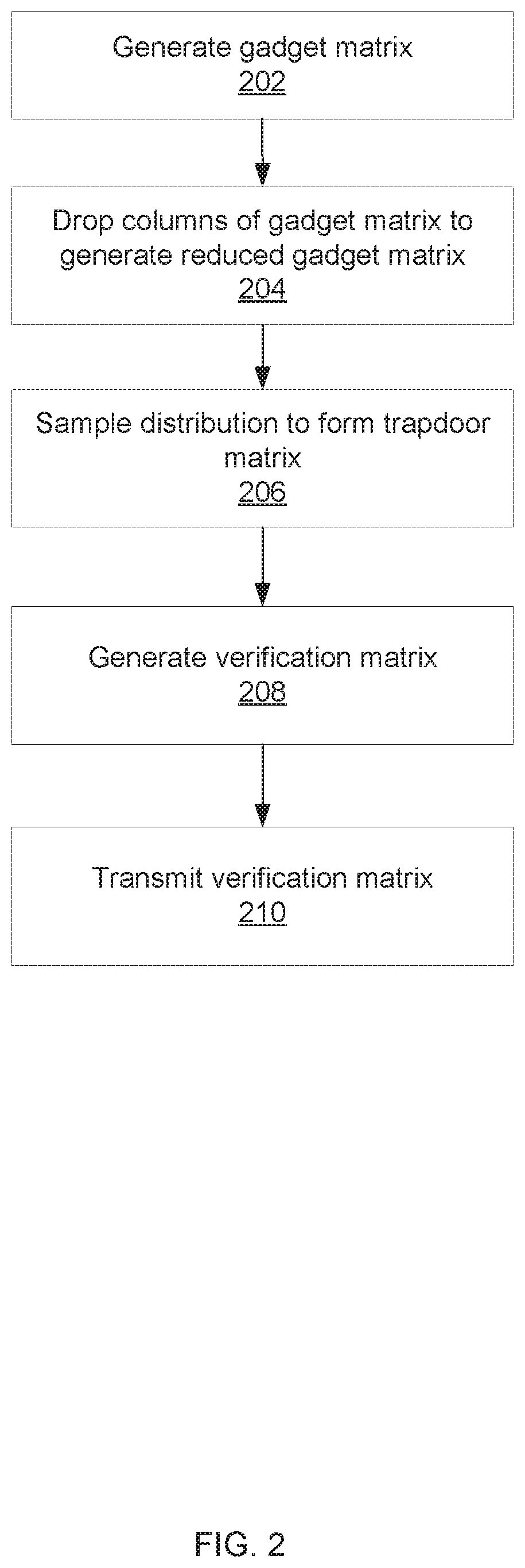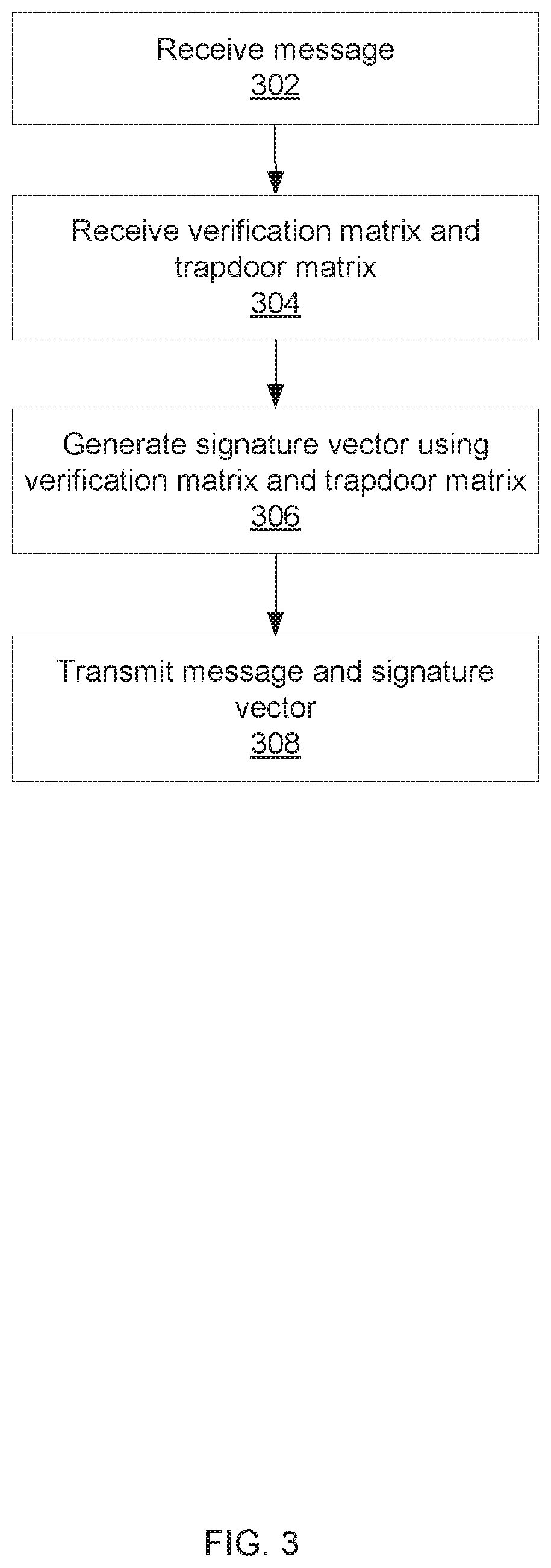More efficient post-quantum signatures
a post-quantum signature, more efficient technology, applied in the field of more efficient post-quantum signatures, can solve the problems of not being able to generate a valid signature, and unable to find a short preimag
- Summary
- Abstract
- Description
- Claims
- Application Information
AI Technical Summary
Benefits of technology
Problems solved by technology
Method used
Image
Examples
Embodiment Construction
[0020]Lattice-based cryptography, cryptography based on lattice problems, can provide cryptographic solutions that are robust especially with the development of quantum computing that can reduce the effectiveness of more traditional cryptosystems. Lattice problems include, for example, the inhomogeneous short integer solution (ISIS) problem, which relates to finding the shortest vector in an n-dimensional lattice of points. The inhomogeneous short integer solution (ISIS) problem asks to find a vector x that satisfies the relationship A·x=y (mod q). In this example, the vector y may be a message, or a hash of the message, and the vector x may be a signature associated with the message. Lattice problems can be computationally difficult, even with quantum computing, making them well suited for cryptographic applications. Solving lattice problems can be made easier with a trapdoor matrix, which can be a matrix that makes a hard problem (such as the ISIS problem) easy, or computable with...
PUM
 Login to View More
Login to View More Abstract
Description
Claims
Application Information
 Login to View More
Login to View More - R&D
- Intellectual Property
- Life Sciences
- Materials
- Tech Scout
- Unparalleled Data Quality
- Higher Quality Content
- 60% Fewer Hallucinations
Browse by: Latest US Patents, China's latest patents, Technical Efficacy Thesaurus, Application Domain, Technology Topic, Popular Technical Reports.
© 2025 PatSnap. All rights reserved.Legal|Privacy policy|Modern Slavery Act Transparency Statement|Sitemap|About US| Contact US: help@patsnap.com



